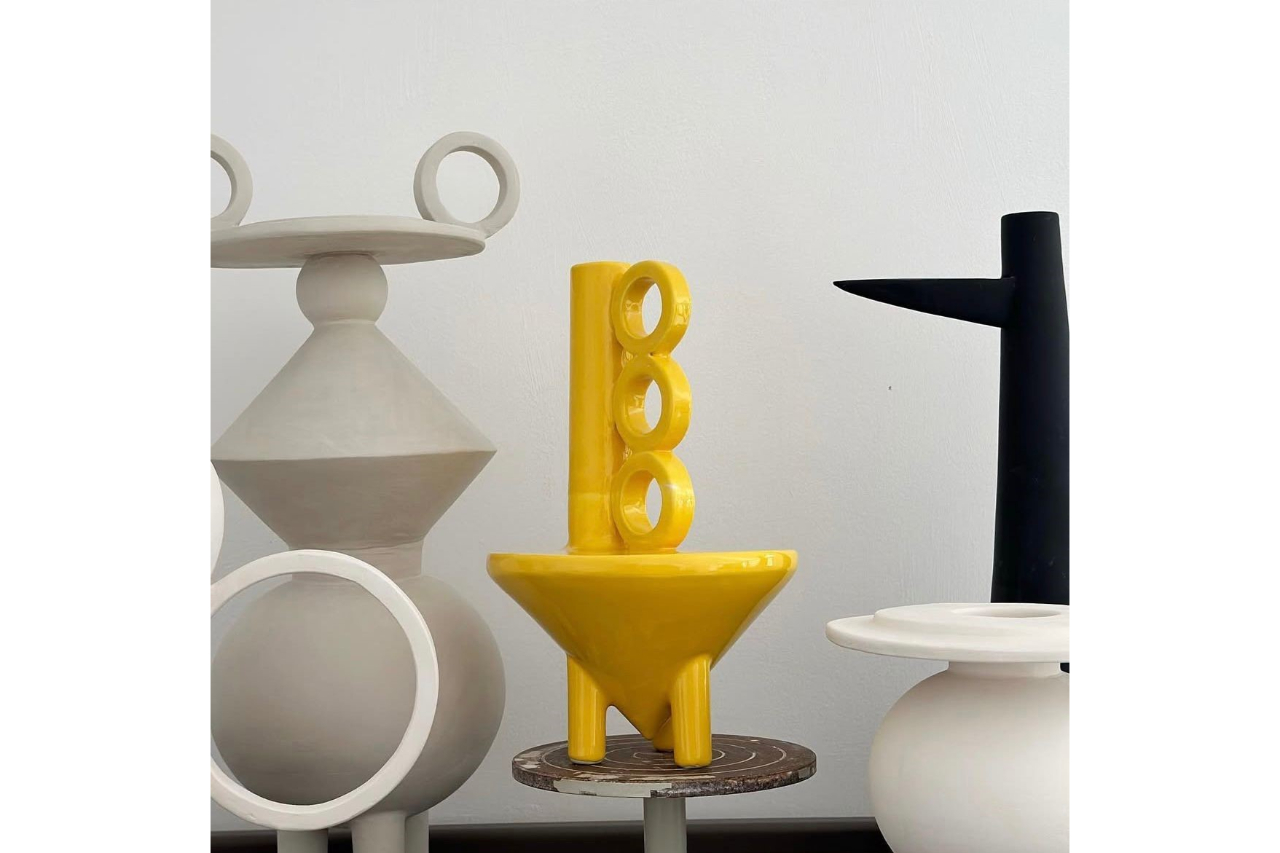
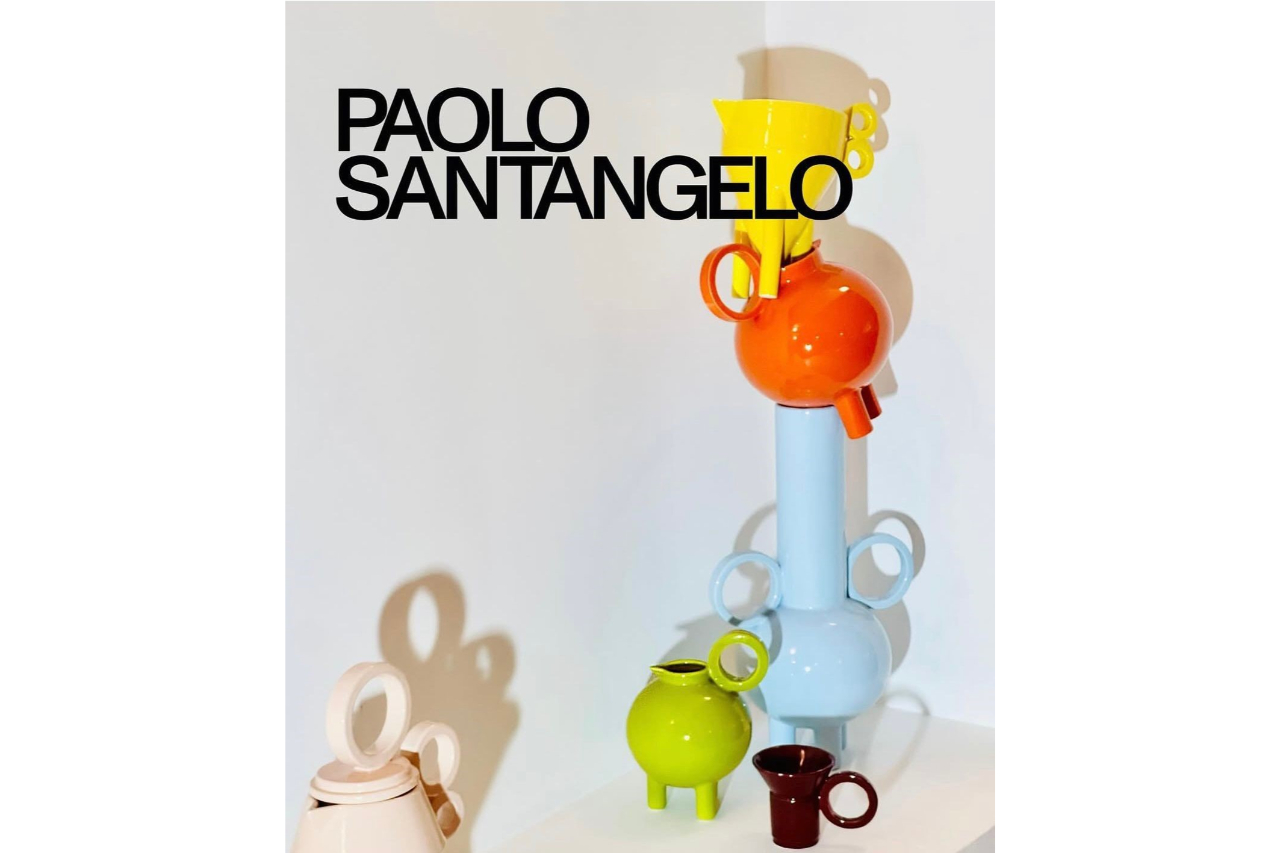
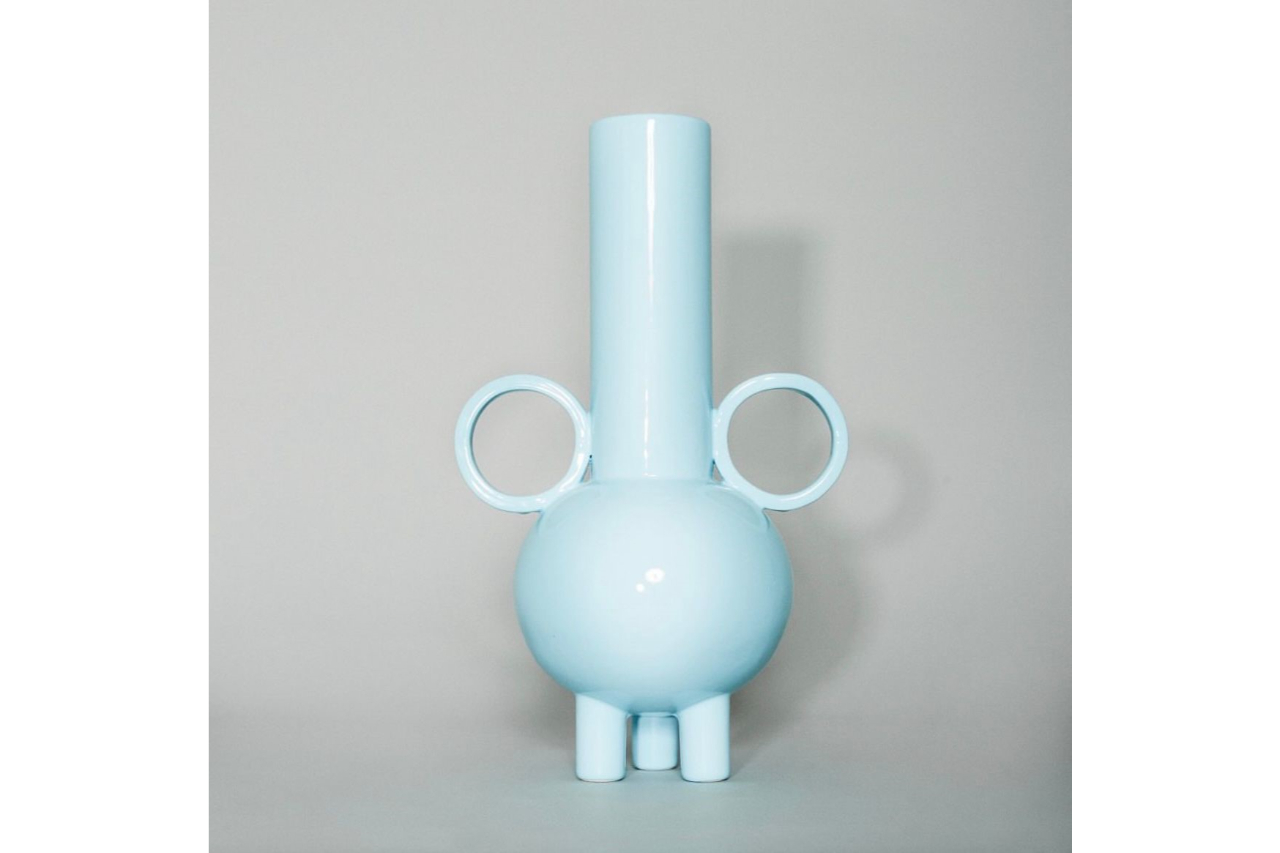
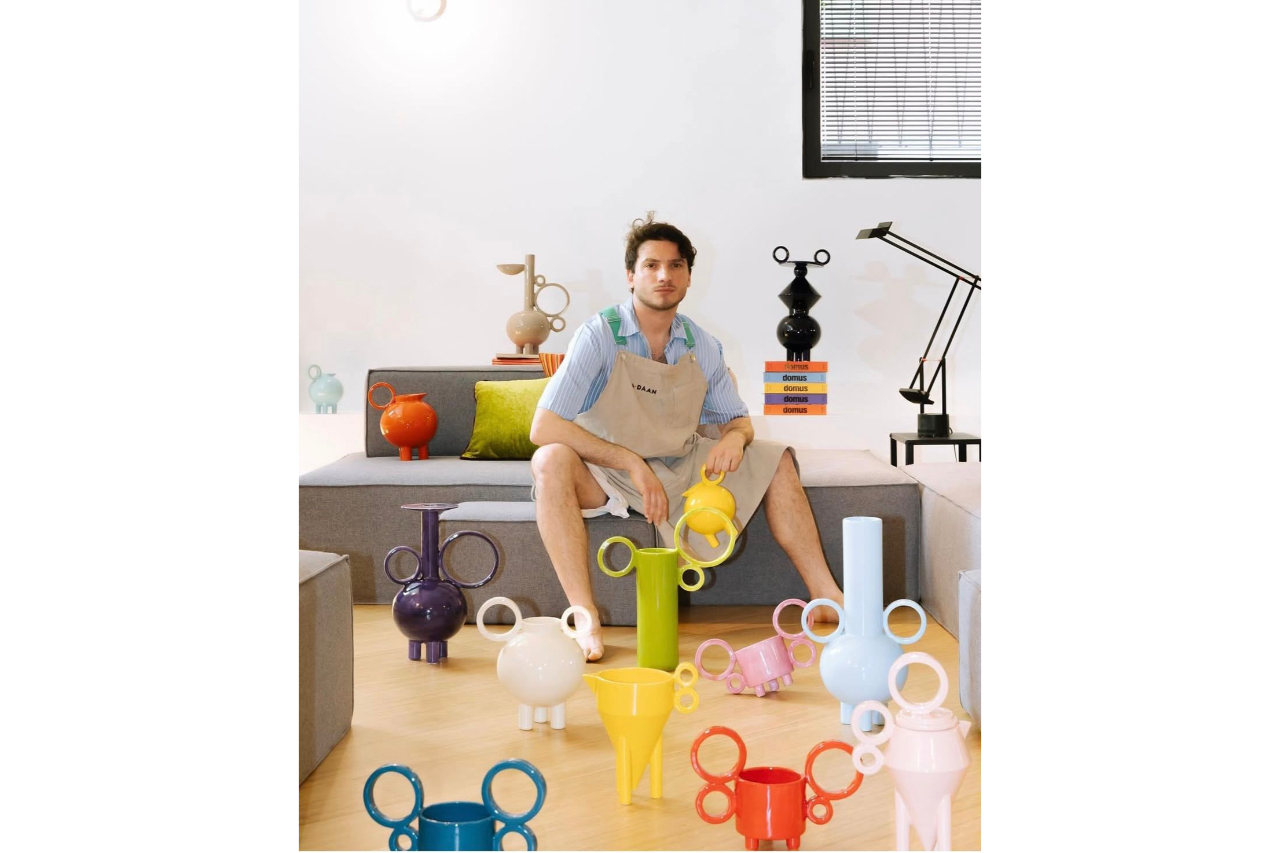
Of Apulian origins, he has a showroom in Milan. Known as "the artist of the circle," his ceramics draw inspiration from a series of influences that embrace the elegant lines of 1950s architecture and design, the aesthetics of the 1970s, and the bold experimentation typical of the 1980s.
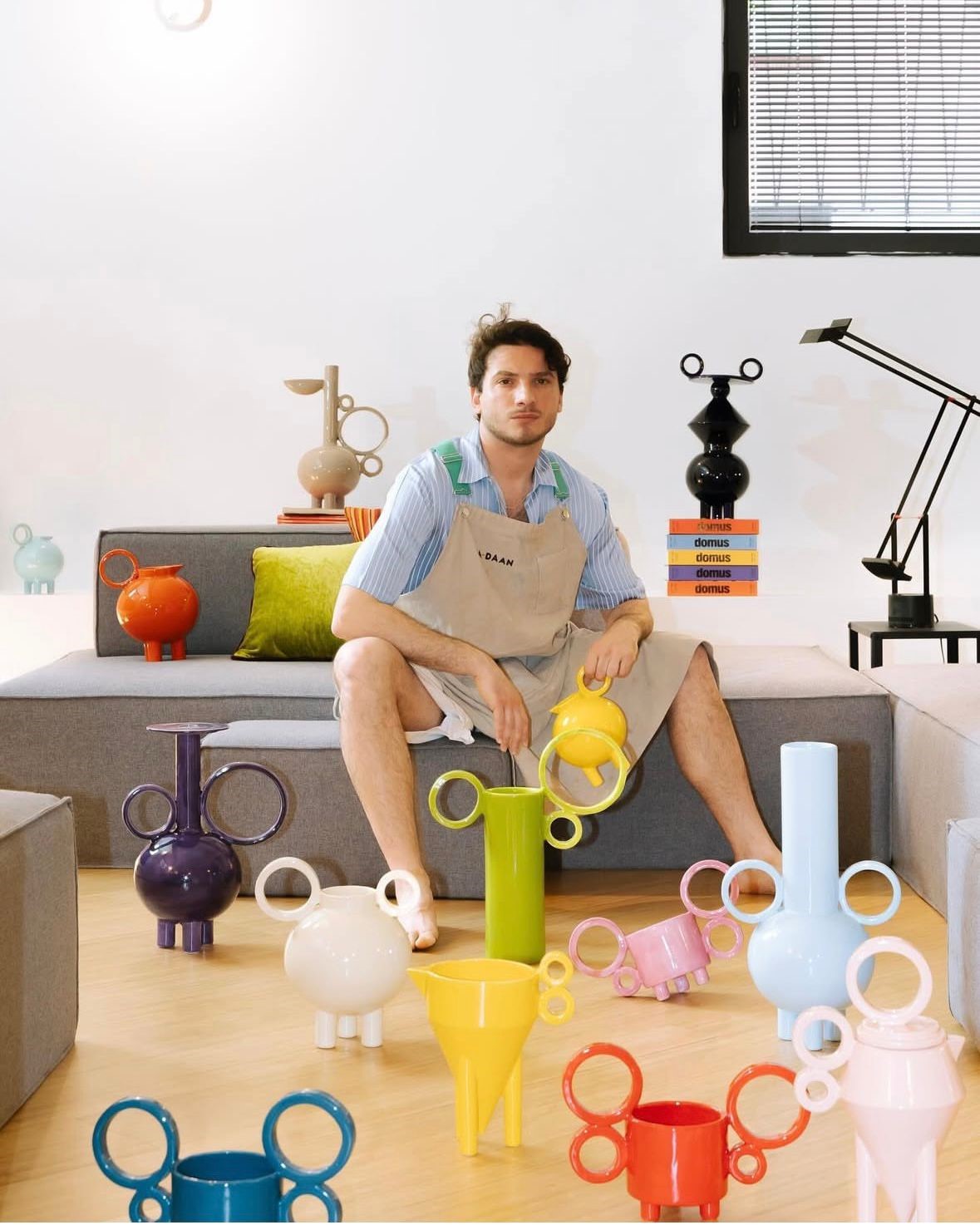
Born in 1980 in Bari, Paolo Santangelo lives in Milan, although his connection with his homeland has never been broken. He has a showroom in the Machiachini-Isola area, but production takes place in Puglia, in Marina di Ginosa (Taranto). A choice also dictated by the heart, "because from a marketing point of view, Puglia needs to have new designers."
"After graduating from classical high school, I moved to Milan," Santangelo explains, "where I continued my studies and obtained a degree in Industrial Product Design from NABA (Nuova Accademia di Belle Arti)." Subsequently, the artist perfected his training with a master's degree in Communication and Styling at IED – Istituto Europeo di Design.
He initially began collaborating with fashion magazines, then, after Covid, he changed direction, embracing the world of ceramics.
The creative context of the Lombard capital led him to explore new horizons. He worked with several prominent figures in the industry and gained experiences that shaped his vision, increasing his awareness and contributing to creating his unique and distinctive style.
"For an object to be effective, it must always be beautiful, a timeless beauty that shuns the fashion of the moment."
What was the source of inspiration?
"There isn't one in particular, but an organic vision has emerged from a combination of influences. The elegant lines of 1950s architecture and design, the aesthetics of the 1970s, and the bold experimentation typical of the 1980s. I do a lot of research on colors, I mix them personally. I was thinking of vases and objects that I couldn't find on the market, vases decorated with circles, very geometric and clean micro and macro combinations. For an object to be effective, it must always be beautiful, a timeless beauty that shuns the fashion of the moment."
Seduced by the worlds of design, fashion, and art and their countless potential for blending, Santangelo finds fertile ground in the works of iconic figures such as Andy Warhol, Guy Bourdin, and, more generally, the Bauhaus school. Among his collaborations, the one with the prestigious Six Senses Hotel, designed by Patricia Urquiola in Rome, stands out.
"I am working with top fashion shops to associate the brand with famous brands. I would like my works to be considered as objects of desire, just like luxury bags and clothing," Santangelo continues.
From the artist's perspective, the vision of the ceramic piece as an accessory emerges. "When you buy an object, you want to add others to create a play of movement. One calls for another."
A constant research that aims to create an intense dialogue between form and color.
He has been defined as "the artist of the circle." What is the origin of this image, and what message does he convey with his creations?
"The artistic ceramics are characterized by pure and linear forms. The soft icon of the circle and the use of clay are elective stylistic choices that shape objects full of elegance, imagination, and refinement, and at the same time convey a daily, familiar, enveloping, and inclusive feeling of warmth and welcome."
His is a constant research that aims to create an intense dialogue between form and color. Thus, a tableware set decorated in shades of arsenic, tangerine, or ivory turns into a dive into the past, into a living room where the great masters of design and architecture laid the foundations of a modern imaginary.
From minimalist metropolitan to rustic style, Santangelo's ceramics are able to enhance any environment, conferring that touch of class and originality dictated by a modus operandi that combines tradition, innovation, and attention to detail. A pursuit of perfection that goes through various stages: the memory and suggestions of the past do not curb his irrepressible desire for research, a curiosity that combines with a persevering analysis of what new stimuli can be translated into expressive forms.
"The customer must immediately perceive that the object welcomed into their home is a unique and beautiful piece that transcends the concept of time. Passing fads will never be able to scratch it and make it obsolete."
With the development of new collections and collaborations, the artist, while remaining true to his stylistic identity, aims to expand his offering to approach other design sectors and shape new materials, such as plastic, stainless steel, and glass.